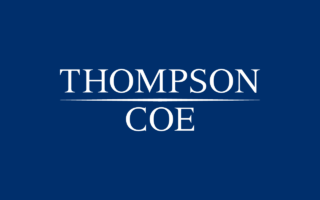Strategy and Ethics in Declaratory Judgment Actions
Nov 1, 2003
I. BASIS FOR DECLARATORY RELIEF
A. State: Uniform Declaratory Judgment Act, Tex. Civ. Prac. & Rem. Code Ch. 37
§37.004 provides:
(A) A person interested under a deed, will, written contract, or other writings constituting a contract or whose rights, status, or other legal relations are affected by statute, municipal ordinance, contract, or franchise may have determined any question of construction or validity arising under the instrument, statute, ordinance, contract or franchise and obtain a declaration of rights, status, or other legal relations there under.
(B) A contract may be construed either before or after there has been a breach.
§37.002 provides that the chapter is remedial: “It’s purpose is to settle and to afford relief from uncertainty and in security with respect to rights, status, and other legal relations; and it is to be legally construed and administered.” The Act does not create or enlarge jurisdiction. E.g., Chenault v. Phillips, 914 S.W.2d 140, 141 (Tex. 1996). Pursuant to §37.003, a declaration may be either affirmative or negative in form and effect. Thus, an insured can seek an affirmative finding of coverage, or an insurer can seek a negative determination that coverage does not exist. However, each party must still plead for relief and carry its own burden of proof. See, e.g., City of Galveston v. Giles, 902 S.W.2d 167 (Tex. App.–Houston [1st Dist.] 1995, no writ); Employers Cas. Co. v. Tilley, 484 S.W.2d 802, 806 (Tex. Civ. App.–Beaumont 1972), aff’d other grounds, 496 S.W.2d 552 (Tex. 1973) (court had no authority to order declaration against insurer in response to insured’s motion for summary judgment on insurer’s claims); Indigo Oil, Inc. v. Wiser Oil Co., 1998 TEX. APP. LEXIS 7550 (Tex. App.–Dallas 1998, pet. denied) (failure to satisfy burden is not finding of proof of opposite).
§37.008 provides that the court may refuse to render a declaratory judgment if the judgment would not terminate the uncertainty or controversy giving rise to the proceeding.
B. Federal: Declaratory Judgment Act, 28 U.S.C. §§2201-2202
§2201. Creation of remedy
(a) In a case of actual controversy within its jurisdiction, except with respect to Federal taxes . . . any court of the United States, upon the filing of an appropriate pleading, may declare the rights and other legal relations of any interested party seeking such declaration, whether or not further relief is or could be sought. Any such declaration shall have the force and effect of a final judgment or decree and shall be reviewable as such.
* * *
§2202. Further relief
Further necessary or proper relief based on a declaratory judgment or decree may be granted, after reasonable notice and hearing, against any adverse party whose rights have been determined by such judgment.
The Federal Declaratory Judgment Act creates a remedy, not a basis for jurisdiction. Therefore, either diversity or federal question jurisdiction must still exist. See, e.g., Commercial Metals Co. v. Balfour, Guthrie & Co., Ltd., 577 F.2d 264 (5th Cir. 1978). In determining amount in controversy, the court may consider policy limits and defense costs, and is not necessarily limited by the damages pleaded in the underlying suit. See Hartford Ins. Group v. Lou-Con, Inc., 293 F.3d 908 (5th Cir. 2002); Monticello Ins. Co. v. Patriot Sec., Inc., 926 F.Supp. 97, 99 (E.D. Tex. 1996).
Rule 57, FED. R. CIV. P., also addresses declaratory judgments, by reference to 28 U.S.C. §2201, and further provides for a jury trial. Rule 57 also notes that “the existence of another adequate remedy does not preclude a judgment for declaratory relief in cases where it is appropriate.” In addition, Rule 57 provides that “the court may order a speedy hearing as an action for a declaratory judgment and may advance it on the calendar.”
Federal courts have typically held that declaratory relief is discretionary, and a federal court has broad authority to stay or dismiss an action seeking a declaratory judgment. See, e.g., Wilton v. Seven Falls Co., 515 U.S. 277, 286 (1995). A court may not, however, refuse to exercise jurisdiction “on the basis of a whim or personal disinclination.” See, e.g., St. Paul Ins. Co. v. Trejo, 39 F.3d 585, 590 (5th Cir. 1994).
C. Actual Case or Controversy
Under state or federal law, declaratory relief is only appropriate when there is an actual case or controversy. See, e.g., Texas Ass’n of Bus. v. Texas Air Control Bd., 852 S.W.2d 440, 446 (Tex. 1993); Trinity Univ. Ins. Co. v. Sweatt, 978 S.W.2d 267 (Tex. App.–Fort Worth 1998, no pet.) (whether policy was void or loss was covered presented justiciable controversy); American States Ins. Co. v. Bailey, 133 F.3d 363, 368 (5th Cir. 1998). Advisory opinions are prohibited by both the state and federal constitutions. Texas Air Control Bd., 852 S.W.2d at 444. A justiciable controversy requires a real and substantial controversy over tangibles interests, and not merely a theoretical dispute. Bonham State Bank v. Beadle, 907 S.W.2d 465, 467 (Tex. 1995). A trial court has discretion to enter declaratory judgment if it “will serve a useful purpose or will terminate the controversy between the parties.” Id. at 468. A justiciable controversy may nonetheless exist where no other cause of action is available or has ripened. Texas Dep’t of Public Safety v. Moore, 985 S.W.2d 149, 153-54 (Tex. App.–Austin 1998, no pet.); Taylor v. State Farm Lloyds, 2003 Tex. App. LEXIS 8494 (Tex. App.–Austin, Oct. 2, 2003, no pet. h.). On the other hand, the existence of another remedy, or unresolved issues, does not preclude declaratory relief. See, e.g., Standard Fire Ins. Co. v. Fraiman, 514 S.W.2d 343, 346 (Tex. App.–Houston [14th Dist.] 1974, no writ).
II. WHY SEEK DECLARATORY RELIEF?
Coverage disputes under liability policies are well-suited for declaratory actions. There is a contract, and a dispute over the parties’ rights and obligations under the contract. The controversy is ripe, because the insurer is called upon to defend, and because the existence of coverage may impact the outcome of the suit. Declaratory relief is an especially appropriate method for resolving coverage disputes, because of the limited options available for resolution of such disputes. Although efforts are occasionally made, it is inappropriate for the insurer to be joined as a defendant in a liability suit. Rule 38(c), TEX. R. CIV. P., specifically provides, with regard to joinder of third parties, that “This rule shall not be applied, in tort cases, so as to permit the joinder of a liability or indemnity insurance company, unless such company is by statute or contract liable to the person injured or damaged.” Most policies include a “no action” provision that provides that a third party’s right of action against the insured does not arise until there is a settlement, to which the insurer has agreed, or a judgment against the insured. See Great American Ins. Co. v. Murray, 437 S.W.2d 264, 265-66 (Tex. 1969); Getty Oil v. Ins. Co. of N. Am., 845 S.W.2d 794, 801 (Tex. 1992), cert. denied sub nom. Youell & Cos v. Getty Oil Co., 510 U.S. 820 (1993); Service Mutual Ins. Co. of Texas v. Erskine, 169 S.W.2d 731 (Tex. Civ. App.–Waco 1943, no writ); Superior Ins. Co. v. Kelliher, 343 S.W.2d 278 (Tex. Civ. App.–Fort Worth 1961, writ ref’d n.r.e.) (auto liability insurer seeking declaratory relief was not subject to cross-action by injured party, or consolidation of liability and coverage suit); see also Fireman’s Ins. Co. v. Burch, 442 S.W.2d 331, 337 (Tex. 1968) (J. Smith, dissenting).
Similarly, courts have held that an insurance company has no right to intervene in the liability action against the insured to seek a coverage determination. See, e.g., State Farm Fire & Cas. Co. v. Taylor, 706 S.W.2d 352 (Tex. App.–Fort Worth 1986, writ ref’d n.r.e.). Nor can an insurer join the claimants and address the issues through interpleader. See Owens v. Allstate Ins. Co., 996 S.W.2d 207 (Tex. App.–Dallas 1998, pet. denied).
III. WHEN TO FILE?
When to file is often determined by what is at issue. An insurer should not be held to have waived its right to litigate coverage by defending under reservation of rights, or by delay in filing a declaratory judgment action. See, e.g., State Farm Lloyds v. C.M.W., 53 S.W.3d 877 (Tex. App.–Dallas 2001, pet. denied); see also State Farm Fire & Cas. Co. v. Taylor, 832 S.W.2d 645 (Tex. App.–Fort Worth 1992, writ denied) (insurer not estopped by failing to have declaratory judgment determined before judgment in underlying case). Still, there are often strategic benefits to filing early. As Texas law remains uncertain regarding reimbursement of defense costs, and as many insureds are not financially capable of repayment, the defense issue may be rendered moot — either practically or legally — by delay. See State Farm Mut. Auto. Ins. Co. v. Carmichael, 1998 Tex. App. LEXIS 1736 (Tex. App.–Dallas 1998, no pet.). The declaratory action may also bring the coverage issues into focus for the plaintiff, and assist the insured in negotiating settlement.
On the other hand, in some instances, principally those in which only indemnity is at issue, or where stay or abstention is likely, there may be no benefit to early filing.
IV. WHO IS A PROPER PARTY?
A. State Law
§37.006, TEX. CIV. PRAC. & REM. CODE provides, in subpart (a), that:
When declaratory relief is sought, all persons who have or claim any interest that would be affected by the declaration must be made parties. A declaration does not prejudice the rights of a person not a party to the proceeding.
B. Federal Law
The federal act allows the court to declare the rights of “any interested party.”
C. Joinder of the Claimants
Texas is not a direct action state, and a claimant typically has no claim against an insurer until a judgment is obtained. Under most liability policies, the claimants are not third-party beneficiaries and have no direct rights, and no cause of action, against the insurer until there has been a settlement, to which the insurer agrees, or a judgment against the insured. See Murray, 437 S.W.2d 264 (Tex. 1969); see also Allstate Ins. Co. v. Watson, 876 S.W.2d 145, 149 (Tex. 1994). Therefore, the claimants should not be necessary or indispensable parties, prior to the settlement or judgment. See Firemen’s Ins. Co. v. Burch, 442 S.W.2d 331 (Tex. 1968); National Sav. Ins. Co. v. Gaskins, 572 S.W.2d 573, 575 (Tex. Civ. App.–Fort Worth 1978, no writ); Providence Lloyds Ins. Co. v. Blevins, 741 S.W.2d 604, 606 (Tex. App.–Austin 1987, no writ); Safeway Mng. Gen’l Agency v. Cooper, 952 S.W.2d 861 (Tex. App.–Amarillo 1997, no pet.). A future interest in a potential judgment has been held insufficient to allow intervention. See Feria v. CU Lloyds of Texas, 2001 Tex. App. LEXIS 7088 (Tex. App.–Dallas 2001, no pet.) (because claimant could not bring suit, she had no right to intervene); see, e.g., Graciela v. Tagle, 946 S.W.2d 504 (Tex. App.–Corpus Christi 1997, no pet.) (on petition for mandamus, found claimant was not third party beneficiary and had no right to intervene in declaratory action). There are exceptions, of course. The courts have recognized an exception when the liability insurance is statutorily required, and arguably for the benefit of the claimant, such as compulsory auto insurance or workers’ compensation. See, e.g., Dairyland County Mut. Ins. Co. v. Childress, 650 S.W.2d 770, 775-76 (Tex. 1983). Recent cases discussing the enforceability of policy buy-backs suggest there may be other exceptions in which a statutory insurance requirement renders a claimant an intended beneficiary. See, e.g., Stroop v. N. County Mut. Ins. Co., 2000 Tex. App. LEXIS 8082 (Tex. App.–Dallas 2000, pet. denied); Ranger Ins. Co. v. Ward, 107 S.W.3d 820 (Tex. App.–Texarkana 2003, pet. denied).
While the law is less clear, Federal courts, applying Texas law, have reached a similar conclusion. See, e.g., Standard Fire Ins. Co. v. Sassin, 894 F.Supp. 1023, 1026 (N.D. Tex. 1995); but cf. Ohio Cas. Ins. Co. v. Cooper Mach. Corp., 817 F.Supp. 45 (N.D. Tex. 1993).
D. Minors
In American Gen’l Fire & Cas. Co. v. Vandewater, 907 S.W.2d 491 (Tex. 1995), the court held a minor, whose interests were affected, was properly made a party to a declaratory judgment action, and was bound by the judgment where the minor’s mother answered, as next friend, and a guardian ad litem was appointed.
V. WHAT CAN BE DETERMINED?
A. Duty to Defend
Under Texas law, a duty to defend is determined by the complaint allegation rule. Under this rule, the insurer’s defense obligations are determined by the allegations of the pleadings and the language of the insurance policy, without regard to the actual facts. The focus is on the factual allegations that show the origin of damages, rather than the legal theories alleged. If no facts within the scope of coverage are alleged, an insurer is not required to defend. If any facts within the scope of coverage are determined, however, an insurer is required to defend. See Nat’l Union Fire Ins. Co. v. Merchants Fast Motor Lines, Inc., 939 S.W.2d 139 (Tex. 1997); Trinity Universal Ins. Co. v. Cowan, 945 S.W.2d 819 (Tex. 1991).
It is axiomatic that the duty to defend is broader than the duty to indemnify. Indemnity is based on the actual facts establishing liability in the underlying suit. See Farmers Tex. Cty. Mut. Ins. Co. v. Griffin, 955 S.W.2d 81 (Tex. 1997); Heyden Newport Chemical Corp. v. So. Gen’l Ins. Co., 387 S.W.2d 22, 25 (Tex. 1965).
The complaint allegation rule can pose a problem with declaratory relief. Since the duty to defend is based solely on the live pleadings, a declaratory judgment is arguably based only on the pleading in effect, and is not determinative as to any subsequent amended or supplemental pleading. See Bernard v. Gulf Ins. Co., 542 S.W.2d 429 (Tex. Civ. App.–El Paso 1976, writ ref’d n.r.e.) (prior judgment not res judicata as to amended pleading that alleged new facts, not involving “completed operations”); St. Paul Ins. Co. v. Tex. Dept. of Trans., 999 S.W.2d 881, 883 (Tex. App.–Austin 1999, pet. denied); cf. Admiral Ins. Co. v. Rio Grande Heart Specialists of So. Texas, Inc., 64 S.W.3d 497 (Tex. App.–Corpus Christi 2002, pet. dism’d by agrmt.) (no right to new trial because of amended petition where suit brought and determined based on prior petition).
B. Indemnity
A developing issue has been the extent to which declaratory relief is available to determine an insurer’s indemnity obligations, while the underlying suit is pending. A declaratory judgment must be based on an actual controversy, and cannot be merely advisory. For years, Texas courts concluded that a declaration of indemnity was premature, until the underlying suit was resolved. See Fireman’s Ins. Co. v. Burch, 442 S.W.2d 331 (Tex. 1968). Burch involved a declaration that the insurer owed defense, and also owed indemnity for the insured’s liability for his wife’s torts. Id. at 332. There was also a declaration that the insurer owed neither defense nor indemnity to the wife. The Burches were the plaintiffs, and were also the petitioners for declaratory relief. Because there was no judgment in the liability suit, the court concluded that any declaration regarding indemnity would be purely hypothetical.1 In 1997, the Supreme Court concluded that the law had changed, however, and determined that a declaration of indemnity was available, when the same facts that defeated a duty to defend also defeated a duty to indemnify. See Farmers Tex. County Mut. Ins. Co. v. Griffin, 955 S.W.2d 81, 82-84 (Tex. 1997)2; see also State Farm Lloyds v. C.M.W., 53 S.W.3d 877 (Tex. App.–Dallas 2001, pet. denied). The court in Griffin relied upon a change in the Texas Constitution, expanding the scope of district court jurisdiction and eliminating the minimum amount in controversy. 955 S.W.2d at 84 (construing Tex. Const. art. V §8).
On the other hand, where the insured seeks a declaration that the insurer owes indemnity, before resolution of the underlying case, the opinion may be considered advisory, and declaratory relief may, indeed, be premature. See, e.g., Ruth v. Imperial Ins. Co., 579 S.W.2d 523 (Tex. Civ. App.–Houston [14th Dist.] 1979, no writ) (not justiciable controversy); Boorhem-Fields, Inc. v. Burlington Northern Railroad Co., 884 S.W.2d 530 (Tex. App.–Texarkana 1994, no writ) (possibility that liability triggering indemnity would be incurred was a feature hypothetical event, and court had no power to pass upon hypothetical or contingent situation); Fort Worth Lloyds v. Garza, 527 S.W.2d 195 (Tex. Civ. App.–Corpus Christi 1975, writ ref’d n.r.e.) (not justiciable controversy); Foust v. Ranger Ins. Co., 975 S.W.2d 329, 332 (Tex. App.–San Antonio 1998, pet. denied) (any judgment on indemnity was advisory and beyond power and jurisdiction of the court); Campbell v. Commercial Standard Ins. Co., 502 S.W.2d 232 (Tex. Civ. App.–Fort Worth 1973, writ ref’d n.r.e.).
Where a judgment has been entered in the underlying case, and the insurer has refused indemnity, it may also be that declaratory relief is inappropriate, because a cause of action for breach of contract has ripened. The declaratory judgment action allows relief, even where another remedy exists. Nevertheless, some courts have concluded that declaratory relief is inappropriate where another cause of action is fully mature and provides an appropriate remedy at law. See, e.g., Sylvester v. Watkins, 538 S.W.2d 827 (Tex. Civ. App.–Amarillo 1976, writ ref’d n.r.e.); but cf. Bonham State Bank v. Beadle, 907 S.W.2d 465 (Tex. 1995).
The Federal act is broader in scope. Even before the Texas Supreme Court’s opinion in Griffin, federal courts recognized that indemnity presented an actual controversy and was justiciable, prior to judgment in the underlying liability suit. See, e.g., Western Heritage Ins. Co. v. River Entertainment, 998 F.2d 311, 315 (5th Cir. 1993); American States Ins. Co. v. Bailey, 133 F.3d 363, 368 (5th Cir. 1998); Monticello Ins. Co. v. Patriot Sec., Inc., 926 F.Supp. 97 (E.D. Tex. 1996) (nevertheless refraining from determining coverage for indemnity, on the basis of judicial economy).
C. Limits/Number of Occurrences
In Foust v. Ranger Ins. Co., 975 S.W.2d 329 (Tex. App.–San Antonio 1998, pet. denied), the court held it was permissible, and not purely advisory, to determine the number of occurrences involved in the underlying litigation. The claims involved crop-dusting, which allegedly damaged abutting fields because of herbicide drift. The crop-dusting involved only one flight, but several passes during which herbicide was released, and during which wind direction and velocity varied. The policy provided limits of $100,000 per occurrence and $200,000 in the aggregate. The court noted that the Griffin exception did not apply, but that a justiciable controversy existed, as the judgment clarified the rights of the parties under the contract; especially because the policy includes a provision under which Ranger could be relieved of its duty to defend by tendering its limits.
VI. USE OF EXTRINSIC EVIDENCE
Despite the complaint allegation rule, Texas courts have always recognized that there are circumstances in which the court must look to extrinsic evidence to determine whether a duty to defend exists. Indemnity, on the other hand, is based on actual facts and should always be subject to extrinsic evidence. In older cases, courts allowed broad introduction of extrinsic evidence in a declaratory judgment context. In Nat’l Union Fire Ins. Co. v. Merchants Fast Motor Lines, Inc., 939 S.W.2d 139 (Tex. 1997), the Supreme Court reaffirmed the complaint allegation rule, with dicta suggesting that the exception for extrinsic evidence would be narrowed. The abundance of case law allowing extrinsic evidence, however, suggests that the exception will continue. There are a number of instances in which extrinsic evidence may be at issue:
1. Qualification As Insured.
Extrinsic evidence may be used to show that the person sued does not qualify as an insured, or that the vehicle or equipment in issue is not insured. See, e.g., Cook v. Ohio Cas. Ins. Co., 418 S.W.2d 712, 715-16 (Tex. App.–Texarkana 1967, no writ) (auto excluded); International Serv. Ins. Co. v. Boll, 392 S.W.2d 158, 161 (Tex. App.–Houston [1st Dist.] 1965, writ ref’d n.r.e.) (driver excluded); see also Tri-Coastal Contr’s, Inc. v. Hartford Undw’rs Ins. Co., 981 S.W.2d 861 (Tex. App.–Houston [1st Dist.] 1998, pet. denied).
2. Pleading Silent As To Determinative Facts.
The most common exception for extrinsic evidence is when the pleadings simply do not assert facts that would determine coverage. In this instance, both state and federal courts have readily allowed the use of extrinsic evidence to determine the duty to defend. See, e.g., State Farm Fire & Cas. Co. v. Wade, 827 S.W.2d 448 (Tex. App.–Corpus Christi 1992, writ denied) (whether boat was being used for business pursuit); International Serv. Ins. Co. v. Boll, 392 S.W.2d 158, 161 (Tex. App.–Houston 1965, writ ref’d n.r.e.) (whether driver qualified as an insured); John Deere Ins. Co. v. Truckin’ USA, 122 F.3d 270, 272-73 (5th Cir. 1997) (whether vehicle was owned by insured); Harken Exploration Co. v. Sphere Drake Ins., PLC, 261 F.3d 466 (5th Cir. 2001) (when lease obtained); Guaranty Nat’l Ins. Co. v. Vic Mfg. Co., 143 F.3d 192 (5th Cir. 1998) (whether release was sudden and accidental); Western Heritage Ins. Co. v. River Entertainment, 998 F.2d 311, 315 (5th Cir. 1993) (whether accident arose from liquor liability); Acceptance Ins. Co. v. Hood, 895 F.Supp. 131 (E.D. Tex. 1995) (whether trademark violation occurred during policy period). In Wade, the insurer argued that it was not challenging the veracity of the facts alleged, but had a defense independent of the pleadings. Wade, 827 S.W.2d at 451. The court recognized that the insurer was defending, but the coverage issue would not be litigated in the underlying case, so declaratory relief was appropriate. Because the pleadings did not address a fact essential to determining coverage, the court allowed extrinsic evidence. Id. at 452-53; but see Tri-Coastal Contr’s Inc., 981 S.W.2d at 863 (questioning scope of exception).
The Western Heritage case epitomizes the argument for use of extrinsic evidence. The underlying liability suit arose from an accident in which one defendant, while intoxicated, hit the plaintiff’s vehicle, killing their daughter. River Entertainment was joined because it owned Pepe’s where the defendant imbibed. The insurer denied defense based on the liquor liability exclusion and filed a declaratory judgment action. The petition in the underlying suit was amended, however, and all references to alcohol were deleted. Instead, plaintiffs alleged River Entertainment was negligent for allowing the defendant to leave, in his own vehicle, when they should have known his driving ability was impaired. Id. at 313. The district court dismissed the indemnification issue, but granted judgment on defense, based on the extrinsic evidence.
3. Pleading Incorrect As To Determinative Facts.
The issue becomes more murky when allegations triggering coverage are alleged, but are in conflict with the actual facts. The courts appear to be split, with federal courts being somewhat more lenient in allowing the use of extrinsic evidence in this circumstance. See, e.g., Ohio Cas. Co. v. Cooper Machinery Corp., 817 F.Supp. 45 (N.D. Tex. 1993); McLaren v. Imperial Cas. & Ind. Co., 767 F.Supp. 1364 (N.D. Tex. 1991), aff’d in part, 961 F.2d 213 (5th Cir. 1992); cf. Westport v. Atchley, Russell, Waldrop & Hlavinka, 267 F. Supp. 2d 601, 621-22 (E.D. Tex. 2003) (finding Texas allows only narrow exception); but see Gonzales v. American States Ins. Co., 628 S.W.2d 184 (Tex. App.–Corpus Christi 1982, no writ) (could not consider facts of ownership that conflicted with petition); Calderon v. Mid-Century Indem. Co. of Texas, 1998 Tex. App. LEXIS 7982 (Tex. App.–Austin 1998, pet. denied) (refusing to allow use of extrinsic evidence to disprove alleged facts).
4. Issues Material to the Outcome of Underlying Suit.
Courts have struggled with the issue of what can be resolved in the declaratory judgment action, when the issue determining coverage may also be material in the underlying case. In Gonzales v. American States Ins. Co., 628 S.W.2d 184 (Tex. App.–Corpus Christi 1982, no writ), the court declared that the rule was that use of extrinsic evidence was allowed to determine coverage, but not to determine facts that would establish the insurer’s liability. See Tri-Coastal Contractors, Inc. v. Hartford Undw’rs Ins. Co., 981 S.W.2d 861 (Tex. App.–Houston 1998, pet. denied) (disallowing evidence of workers’ compensation payments to establish employment).
It is still likely a court will not allow dual-track litigation of issues that affect liability and coverage. One reason proffered is the possibility of inconsistent outcomes. But, because courts have recognized that, where a coverage issue exists, there is no privity between the insured and the insurer, there is an argument that an insurer should be allowed to litigate facts in a declaratory judgment, regardless of whether the facts are also being litigated in the underlying suit. Because the insurer would be allowed to re-litigate, after the underlying case is resolved, there is no reason to delay the inevitable. Cf. Cluett v. Medical Protective Co., 829 S.W.2d 822, 826 (Tex. App.–Dallas 1992, writ denied) (insurer not collaterally estopped from challenging findings); United States Fire Ins. Co. v. Deering Mgmt. Group, Inc., 946 F.Supp. 1271 (N.D. Tex. 1996) (insurer not estopped from litigating employment issue).
VII. RE-LITIGATION OF FACTS
When an issue has been litigated in the underlying case, when can it be re-litigated in the coverage dispute? The answer may depend upon whether the insurer has defended or simply denied coverage, and the extent to which the issue is actually material to, and fully litigated in, the underlying dispute. Courts recognize that when there are conflicting positions on coverage, as when the insurer reserves rights, there is no privity between the insured and the insurer on issues relating to coverage, which are also at issue in the underlying case. As such, there should be no collateral estoppel of the insurer, based upon the outcome of the issue in the underlying case. E.g., Cluett v. Medical Protective Co., 829 S.W.2d 822, 826 (Tex. App.–Dallas 1992, writ denied); U.S. Fire Ins. Co. v. Deering Mgmt. Group, Inc., 946 F.Supp. 1271 (N.D. Tex. 1996). In a number of instances, courts have concluded that an insurer is entitled to re-litigate issues. See Employers Cas. Co. v. Block, 744 S.W.2d 940, 943 (Tex. 1998), overruled on other grounds, State Farm Fire & Cas. Co. v. Gandy, 925 S.W.2d 696 (Tex. 1996); Williamson v. State Farm Lloyds, 76 S.W.3d 64 (Tex. App.–Houston [14th Dist.] 2002, no pet.); State Farm Lloyds Ins. Co. v. C.M.W., 53 S.W.3d 877 (Tex. App.–Dallas 2001, pet. denied) (judgment of negligence in underlying case did not establish that negligent acts caused bodily injury, and did not preclude insurer from establishing intentional conduct); Deering Mgmt. Group, 946 F.Supp. at 1280 (insurer not precluded from relitigating course and scope of employment). In Williamson, a jury awarded the claimant damages against the insured for false imprisonment. The insurer refused to pay the judgment, on the basis that the insured’s conduct constituted a willful violation of a penal statute, and was thus excluded by the policy. The court, in the coverage action, concluded that there was a conflict of interest and a lack of privity, and therefore the insurer was not collaterally estopped from re-litigating the existence of false imprisonment. Id. at 68. While some older cases find an insurer cannot re-litigate facts, if it has wrongfully refused to defend, recent cases have held that an insurer is not bound, in any circumstance, where the facts allegedly establishing coverage are not fully litigated. See State Farm Fire & Cas. Co. v. Gandy, 925 S.W.2d 696 (Tex. 1996). In Gandy, the court broadened the scope of re-litigation, noting that “in no event, however, is a judgment for plaintiff against defendant rendered without a fully adversarial trial, binding on defendant’s insurer . . . .” 925 S.W.2d at 714.
VIII. RECOVERY OF ATTORNEY’S FEES AND COSTS
A. State
Tex. Civ. Prac. & Rem. Code§37.009 provides that “in any proceeding under this Chapter, the court may award costs and reasonable and necessary attorney’s fees as they are equitable and just.”
The right to award costs and fees is discretionary, not mandatory. See Bocquet v. Herring, 972 S.W.2d 19 (Tex. 1998); see also Abraxas Petroleum Corp. v. Hornburg, 20 S.W.3d 741 (Tex. App.–El Paso 2000, no pet.); Rice v. Alamo Rent-A-Car, Inc., 987 S.W.2d 231 (Tex. App.–Beaumont 1999, pet. denied); State Farm Lloyds v. C.M.W., 53 S.W.3d 877 (Tex. App.–Dallas 2001, pet. denied). The award is subject to reversal only if it is arbitrary and unreasonable. See McCarthy Bros. Co. v. Continental Lloyds, 7 S.W.3d 725 (Tex. App.–Austin 1999, no pet.) (although judgment reversed on coverage, no indication court’s refusal to award fees to either party was abuse of discretion). Costs and fees are not dependent upon the outcome, and can be awarded to either the prevailing or the non-prevailing party. See Scottsdale Ins. Co. v. Travis, 68 S.W.3d 72, 77 (Tex. App.–Dallas 2001, pet. denied); ANR Prod. Co. v. Am. Guar. & Liab. Ins. Co., 981 S.W.2d 889 (Tex. App.–Houston [1st Dist.] 1998, no pet.).
B. Federal
Under federal law, the Declaratory Judgment Act, itself, does not authorize attorney’s fees. Instead, a party may recover fees only where controlling substantive law permits recovery. See Utica Lloyds of Tex. v. Mitchell, 138 F.3d 208, 210 (5th Cir. 1998) (holding that Texas Declaratory Judgment Act was not controlling, substantive law, and did not justify fee award to defendants). Under Texas substantive law, attorney’s fees may be available to the insured if the insurer has breached its duty to defend or indemnify. While for years there was a question in the Federal courts as to whether §38.001, Tex. Civ. Prac. & Rem. Code, applied to breaches of an insurance agreement, this question was resolved by the Texas Supreme Court, on a certified question from the Fifth Circuit, in Grapevine Excavation, Inc. v. Maryland Lloyds, 35 S.W.3d 1 (Tex. 2000).
Prior to the Grapevine Excavation case, the Fifth Circuit had construed §38.006 to exempt insurers from paying attorney’s fees in breach of contract actions. See Bituminous Cas. Corp. v. Vacuum Tanks, Inc., 975 F.2d 1130, 1133 (5th Cir. 1992); LaFarge Corp. v. Hartford Cas. Ins. Co., 61 F.3d 389 (5th Cir. 1995). The Texas Supreme Court concluded that §38.006 allowed recovery of attorney’s fees for breach of contract unless attorney’s fees are otherwise available. The Fifth Circuit overruled prior case law to conform with the Supreme Court’s ruling. Federated Mut. Ins. Co. v. Grapevine Excavation, 241 F.3d 396 (5th Cir. 2001).
Unfortunately, while §38.001, et seq., may allow recovery of attorney’s fees by the insured, in a proper case, it provides no basis for recovery of fees by an insurer.
IX. VENUE: WHERE CAN SUIT BE FILED?
In addition to the county of the defendant’s residence or principal office, venue is generally deemed proper in the county where the liability suit is pending, or judgment is entered. Cigna Lloyds Ins. Co. v. Bradleys’ Elec., Inc., 993 S.W.2d 673 (Tex. App.–Corpus Christi 1998), rev’d on other grounds, 995 S.W.2d 675 (Tex. 1999) (insured’s motion to transfer erroneously granted); Southern County Mut. Ins. Co. v. Ochoa, 19 S.W.3d 452 (Tex. App.–Corpus Christi 2000, no writ). The county where the contract was formed may also be a proper venue. In Bradleys’ Electric, the court rejected an argument from the insured that the county where the insurance contract was negotiated and executed was the only proper venue, but recognized it was also proper. In Chiriboga v. State Farm Mut. Auto Ins. Co., 96 S.W.3d 673 (Tex. App.–Austin 2003, no pet.), the court held the county where the agent was located, the policy was sold, and the claim was reported, was not a proper venue. The dispute was over an unscheduled vehicle. State Farm argued the policy changes were made in Milam County, where the agent was located, and the policy was sold. The court, however, concluded this was not a county in which a substantial part of the facts giving rise to the coverage dispute arose. The insured was located in Hidalgo County, the car was purchased in Hidalgo County, and the salesman contacted the agent by phone, from Hidalgo County, to add the car to the policy. The collision was also in Hidalgo County, as was the liability suit.
X. DISCOVERY
A number of issues arise in regard to discovery in a declaratory judgment action. In part, of course, the scope of discovery will be determined by the nature of the issue. In duty to defend cases, the issue of whether extrinsic evidence is even relevant would likely arise. In cases involving duty to indemnify, there may be issues as to whether the indemnity facts were fully litigated in an actual trial, or whether the facts can be re-litigated, construing Gandy and Maldonado.
Issues also arise, when the underlying case is still proceeding, as to the extent to which the insurer can discover information which could also be relevant, and potentially damaging, in the underlying liability suit. Where the insurer is providing a defense, it is a party to the attorney-client privilege, and can share in communications between the insured and defense counsel, without waiver. See, e.g., Boring & Tunneling Co. v. Salazar, 782 S.W.2d 284, 289-90 (Tex. App.–Houston [1st Dist.] 1989, no writ); In re Fontenot, 13 S.W.3d 111 (Tex. App.–Fort Worth 2000, no pet.). Defense counsel may, nonetheless, have protected certain information from disclosure, for fear that it was effect coverage, and violate counsel’s own ethical obligations. Despite the insurer’s right to review any such documents without waiver of the privilege, and the likelihood that defense counsel’s concerns would be abrogated by the right to conduct discovery, there is still a question as to what extent defense counsel’s opinions or observations would be relevant to coverage. A separate issue exists, however, as to the facts and testimony relating to the liability event, and the evidence that has been accumulated or produced in the underlying case. Clearly, the insurer should be entitled to discovery of anything that has been discovered in the underlying suit. If the discovery is limited, or poorly conducted, or does not address the coverage issues, however, the insurer may seek additional testimony and evidence. In this instance, there may be legitimate concerns that the insurer’s discovery will inure to the benefit of the liability plaintiff, which is likely not in the interest of either the insured or the insurer. As a preliminary consideration, counsel for the insurer should be careful and selective in what is requested. In addition, in many instances, a protective order will allow broad discovery, without fear of disclosure to the plaintiff. Protective orders are still relatively simple, and can usually be subject to an agreed motion in federal court. In state court, an order to seal discovery requires that the parties jump through a number of additional hoops, but protective orders are still available. See Fed. R. Civ. P. 26; Tex. R. Civ. P. 76A; 192.6(b)(5).
Obviously, the nature of the coverage issue to be determined will also determine the scope of discovery. In a straight complaint allegation case, for instance, there should be extremely limited discovery, beyond verification of the pleadings and the policy. Where extrinsic evidence is offered, however, the scope of discovery should be broader. Further, while it is unlikely that an insurer wishes to proceed, without protective order, to establish evidence that demonstrates the insured’s liability — as the insurer has not yet prevailed on its coverage defenses — it is also unclear under what standard the insured should be able to protect otherwise discoverable information, simply because it is damaging.
XI. DISMISSAL, ABATEMENT AND ABSTENTION
Federal courts have broad discretion as to whether to retain jurisdiction or dismiss declaratory judgment actions. E.g., Wilton v. Seven Falls Co., 515 U.S. 277 (1995); American States Ins. Co. v. Bailey, 133 F.3d 363, 368 (5th Cir. 1998). It is not an abuse of discretion, however, to retain a suit, and to decide issues of indemnity, even before the underlying liability suit has reached judgment. Id. at 368-69. It may be appropriate for courts to abstain, in certain circumstances. See Bailey, 133 F.3d at 369 n.4; Travelers Ins. Co. v. Louisiana Farm Bureau Fed’n, Inc., 996 F.2d 774, 778 (5th Cir. 1993). Federal courts are especially reluctant to exercise jurisdiction if there is a parallel state court proceeding — even if subsequently filed — that includes all necessary parties and will resolve the issues. See Brillhart v. Excess Ins. Co., 316 U.S. 491 (1942); Wilton, 515 U.S. 277. One of the factors the courts will review is whether the declaratory action is filed in anticipation of a state court suit. See Granite State Ins. Co. v. Tandy Corp., 986 F.2d 94, 96 (5th Cir. 1992), cert. dism’d, 507 U.S. 1026 (1993).
A federal court cannot, however, stay a pending suit for declaratory relief to allow the parties to re-file suit in state court, as the state court will have no jurisdiction. See United Services Life Ins. Co. v. Delaney, 386 S.W.2d 648 (Tex. Civ. App.–San Antonio 1965), aff’d, 396 S.W.2d 855 (holding state court had no jurisdiction to render advisory opinion while prior suit was pending on appeal in Fifth Circuit, despite federal court’s voluntary stay).
While federal abstention doctrine is equally applicable to declaratory judgments action, courts are particularly vigilant in exercising their discretion to protect comity and prevent forum shopping. A court can dismiss a declaratory action even if it fails to meet the stringent standards for abstention. See Travelers Ins. Co. v. Louisiana Farm Bureau Federation, 996 F.2d 774, 778 (5th Cir. 1993) (Colorado River factors inapplicable in declaratory judgment action); Granite State Ins. Co. v. Tandy Corp., 986 F.2d 94, 95 (5th Cir. 1992), cert. dism’d, 507 U.S. 1026 (1993); cf. Frontier Pac. Ins. Co. v. Marathon Ashland Petrol., L.L.C., 87 F. Supp. 2d 719 (S.D. Tex. 2000) (staying declaratory action because of motion to join insurer in state court liability suit).
In St. Paul Ins. Co. v. Trejo, 39 F.3d 585 (5th Cir. 1994), the court reviewed abstention doctrine in relation to declaratory judgment actions. At issue was a declaratory judgment action over whether medical expenses were owed to an insured worker, under The Worker’s Compensation Act, where the expenses were incurred after settlement of the employee’s negligence suit against a third party. St. Paul had also appealed the original award to state district court, and that suit had also been settled, with a provision for payment of future expenses.
After St. Paul filed its declaratory action in federal court, the claimant filed suit in state court — in the same court in which the two prior suits had been filed. The district court dismissed the declaratory action on the defendant’s motion based on 28 U.S.C. §1445(c) and federal abstention principles.
The Fifth Circuit reviewed abstention under the Burford and Colorado River doctrines, and concluded that neither was applicable. The court then noted the special concerns applicable in declaratory actions. Citing the Travelers case, the court recited the relevant factors the court must consider in determining whether to dismiss a declaratory judgment action:
1) whether there is a pending state action in which all of the matters in controversy may be fully litigated;
2) whether the plaintiff filed suit in anticipation of a lawsuit filed by the defendant;
3) whether the plaintiff engaged in forum shopping in bringing the suit;
4) whether possible inequities in allowing the declaratory plaintiff to gain precedence in time or to change forums exist;
5) whether the federal court is a convenient forum for the parties and witnesses;
6) whether retaining the lawsuit in federal court would serve the purposes of judicial economy; and
7) whether the federal court is being called on to construe a state judicial decree involving the same parties and entered by the court before whom the parallel state suit between the same parties is pending.
39 F.3d at 591. The court remanded for consideration of these factors.
While abstention doctrine is more frequently an issue in federal court, state courts can also abstain. Typically, the first-filed suit has dominant jurisdiction. There are exceptions, however, (1) when conduct estops a party from asserting prior active jurisdiction; (2) where parties are lacking; or (3) where there is lack of intent to prosecute. See Southern County Mut. Ins. Co. v. Ochoa, 19 S.W.3d 452 (Tex. App.–Corpus Christi 2000, no writ).
Where suits are filed in two states, one court may abstain in favor of the first-filed suit. A Texas court may also enjoin the litigants from moving forward on the same issues in any other jurisdiction. Typically, an anti-suit injunction is appropriate in limited instances: 1) to address a threat to the court’s jurisdiction; 2) to prevent the evasion of important public policy; 3) to prevent a multiplicity of suits; or 4) to protect a party from vexatious or harassing litigation. See London Mut. Ins’rs v. American Home Assur. Co., 95 S.W.3d 702 (Tex. App.–Corpus Christi 2003, no writ).
A federal anti-injunction also exists. 28 U.S.C. §2283. As with the state act, one of the exceptions allows a federal court to enjoin re-litigation in state court “to protect or effectuate its judgments.” See Royal Ins. Co. v. Quinn-L Capital Corp., 3 F.3d 877 (5th Cir. 1993), cert. denied, 511 U.S. 1032 (1994).
End Notes
1 Justice Smith was perhaps prescient in his dissent, concluding that a justiciable controversy existed.
2 The court’s decision has been described as carving out an exception, rather than overruling prior law. Foust v. Ranger Ins. Co., 975 S.W.2d 329, 332 n.1 (Tex. App.–San Antonio 1998, pet. denied).







